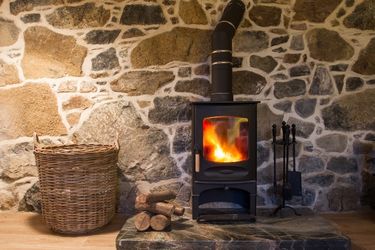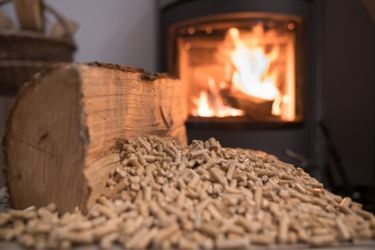
Written by Kayla Jane Barrie Updated on Feb 26, 2025 4 mins read

Many regions are approaching heating season in Canada – turning on our furnaces, boilers or wood stoves to stay warm. Although wood stoves require specific maintenance and inspections to be appropriately covered with home insurance, it can be done without a drastic increase in your policy.
We answer your burning questions about operating wood and pellet stoves and insuring them safely.
If you opt for a supplemental heat source such as a wood stove, there are two types of fuel to choose from - firewood and wood pellets. Pellet stoves operate with a full hopper of pellets and can be controlled with a thermostat. A wood stove must be maintained with fresh wood to keep constant heat.
When choosing which type is right for you, compare each model's benefits, features, and frequent issues.
Wood stoves will increase your premium by 10% or a set amount of $100 or more, depending on your provider. You can have a lower increase by choosing a higher deductible and confirming you are paying only for the features you need.
Hold on to all your maintenance receipts because you are responsible for getting inspections and cleanings. Suppose you do not inform your insurer that you have a wood burning stove or prove any maintenance. In that case, the insurer can deny your claim and cancel your policy.
A professional must install a wood stove and have a current WETT Certificate to confirm that it is installed correctly and meets current building codes. This certification will not only make your stove safer but will help insurers who are underwriting your policy. It will require :
Having a WETT Certification and maintenance records will help you get insurance with a wood burning stove in your living space.
In Ontario, a WETT (Wood Energy Technology Transfer) inspection is a type of inspection for woodstoves – insurance companies generally require a WETT inspection before issuing a policy. You can find a local inspector online and set up an appointment. It is recommended to get the inspection when you buy a house with a wood burning stove, and then every five years. You can find an inspector near you by searching online.

Many insurers will protect your home if you have a wood stove as long as you meet the requirements for safety and it is installed properly. Remember, it is better to inform your provider of the stove – if you need to make a home insurance claim and didn’t tell them you had a stove, you could face your claim being denied. You may want to take a look at additional fire insurance to ensure you know what is covered if there is an accident.
Wood stoves can keep you warm and cozy. Still, they can turn dangerous quickly if they are not working correctly or regularly maintained. Heating fires cause 36% of residential fires.
Keep your home safe with these wood stove safety tips.

Pellet stoves can raise your home insurance because they increase the risk of structural damage and fire. Pellet stoves emit smoke and, over time, can cause damage to the structure of your building. Similar to the wood stove, you may need to get inspections and show proof of installation and service records.
You may see an increase, but it is generally less than 10%. You can also speak to your insurer about an endorsement for the pellet stove. Pellet models often have a lower increase since they are less likely to cause a house fire than wood burning varieties.
While you are working on that fall home maintenance checklist, be sure to look at your pellet stove. To keep it running all winter smoothly, follow these three safety tips.
Wood stoves are legal in the province, but every home with a wood burning stove must meet building compliance, local laws, and safety requirements.
It is not recommended to leave a wood burning stove lit overnight. However, if it is a primary source of heating in your home, you can stay safe by choosing hardwood that fits inside the stove, dampen down the flames, close air vents and stoke the fire in the morning.
There must be a clearance of at least 36 inches between the top of the stove and the ceiling. Be mindful of making space around the stove and not place furniture nearby.
You can get home insurance in Canada if there is a wood stove in your living space. Wood stoves will need to be inspected and certified. Contact your broker to ensure you have proper coverage.
| Categories | Home |
|---|---|
| Tags | Homeowners ClaimsSeasonal HomeHome Coverage |
Read our insurance blog to get helpful tips, information and news.
Impaired driving in Ontario is a serious offence. Learn about impaired driving fines, penalties, statistics and other important information all drivers in Ontario need to be aware of before they get behind the wheel.
Learn why parking violations are non-moving, how long they stay on your record, and the serious indirect risk of unpaid tickets.
Has your car been totalled in an accident? Is your car a write off? Learn about vehicle write offs for a total loss insurance claim.
Get the facts on Toronto's auto theft problem. We break down the data, reveal the most-stolen vehicles (including the Honda CR-V and Lexus RX 350), and show which neighbourhoods are most affected.